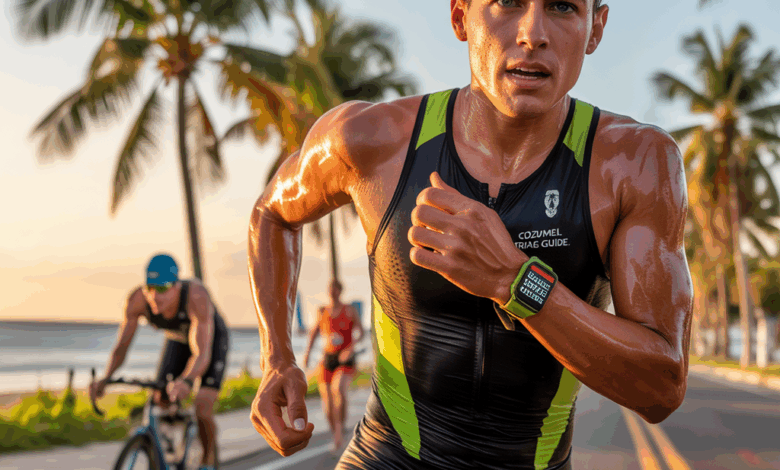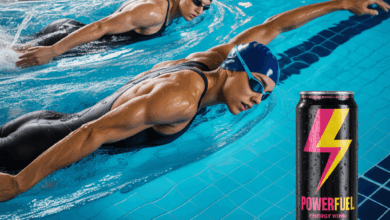Cozumel Triathlon Guide For Race

Have you ever imagined standing on a warm Mexican shoreline, heart racing as the starting horn echoes across turquoise water? If the thought of racing on sun-soaked roads and swimming in crystal-clear seas gets your pulse up, this Cozumel triathlon guide for race preparation will take you from nervous to race-ready with practical, no-nonsense advice.
Why Cozumel Is a Race Unlike Any Other
Cozumel offers a unique mix of a breezy island bike course, open-water ocean swim, and a flat but sun-exposed run. The island’s warm temperatures, humidity, and coastal winds make pacing, heat management, and open-water skills essential. Whether you’re racing a sprint, Olympic, or half-iron distance, understanding the course and environment is the first step to a successful race day.
Course Characteristics to Know
- Open-water ocean swim with variable currents and saltwater buoyancy.
- Relatively flat bike course, often exposed to steady crosswinds or headwinds.
- Flat run along coastal roads — fast but hot and sunny.
Cozumel Triathlon Guide for Race: Training Essentials
Targeted training matters more than piling on hours. Here’s how to structure your weeks in the 8–12 weeks before race day to match Cozumel’s demands.
Sample Weekly Layout (Intermediate Athlete)
- Monday: Recovery swim + mobility and light strength
- Tuesday: Bike intervals (threshold/VO2) + short brick run (10–20 minutes)
- Wednesday: Long swim — focus on open-water sighting and sets (e.g., 5 x 800 with sighting every 200)
- Thursday: Tempo run or hill repeats + strength (core & single-leg work)
- Friday: Easy spin + technique-focused swim
- Saturday: Long bike with sustained tempo sections
- Sunday: Long run (progressive pacing)
Key Workouts and Variations
- Open-water simulations: practice bilateral breathing, sighting, and mass start drills.
- Brick sessions: 60–90 minute bike followed by a 20–40 minute run to adapt legs for the race effort.
- Interval train for wind: include short hard efforts on the bike (6–10 x 3 minutes at tempo) to mimic punchy crosswinds and gusts.
- Heat acclimation: include 2–3 weeks of training in warmer conditions or use sauna sessions post-workout to adapt to Cozumel’s heat and humidity.
Open-Water Swim Tips for Cozumel
Saltwater buoyancy is forgiving, but currents and waves can be tricky. Practice sighting every 6–8 strokes, swim in chop, and get comfortable with drafting when appropriate. If you can, do at least two open-water sessions per week leading up to the race and attend a local group swim or clinic to rehearse mass starts.
Gear for the Ocean
- Well-fitted wetsuit or legal non-wetsuit options depending on race temps.
- Bright cap for visibility and mirrored goggles for sun glare.
- Apply lubricant to prevent chafing and practice bottle-to-mouth hydration while riding to prepare for sea-sickness or dehydration.
Bike and Run Strategies — Wind, Pace, and Transitions
Because Cozumel is often windy, focus on pedaling efficiency and core stability. Practice holding an aerodynamic position and using your gears efficiently to handle gusts without over-revving.
Transition Area Tips
- Layout your race bag to minimize movement—run shoes clipped in, helmet and sunglasses prepped, nutrition in pockets.
- Practice quick removals of wetsuit and goggles; consider a wetsuit strapping trick to save precious seconds.
- Do brick workouts that include quick dismounts and running out of the saddle to simulate transition cadence.
Nutrition, Hydration, and Recovery
Racing in heat demands a practical fueling and hydration plan. Start with a race-week carbohydrate focus, but don’t neglect electrolytes — sodium loss is higher in humid conditions.
Race Nutrition Checklist
- Pre-race: carbohydrate-rich breakfast 2–3 hours before start and a light snack 30–60 minutes out.
- During the race: a consistent intake of 30–60g of carbs per hour for Olympic distance; more for longer events — combine gels, chews, or concentrated sports drink.
- Hydration: use electrolytes during long training rides and on race day; practice in training to find tolerable flavors and concentrations.
- Recovery: prioritize protein and carbs within 30–60 minutes post-race and schedule a restorative swim or light spin the next day.
Travel and Race Week Logistics
Minimize stress by getting to Cozumel with time to spare. Aim to arrive 2–3 days early if you can — this helps adjust to the climate, final bike checks, and course recon.
Race Week Checklist
- Bike tune and handlebar fit check.
- Pack sunscreen, anti-chafe cream, and hydration tablets.
- Confirm race packet pickup times and pre-race briefing schedule.
- Plan light, familiar meals and keep caffeine routines steady.
Healthy Lifestyle Tips for Peak Performance
Training consistently is important, but lifestyle factors often make the difference on race day:
- Prioritize 7–9 hours of sleep and implement consistent bedtime routines.
- Manage stress with breathing exercises, short yoga flows, or walks — mental freshness speeds recovery.
- Strength train twice weekly focusing on hip, glute, and core stability to reduce injury risk.
- Monitor overall training load and schedule at least one recovery week every 3–4 weeks.
Frequently Asked Questions
1. What should I expect from the Cozumel swim course?
The swim is typically in open ocean with clear water and possible chop. Expect bright sun and potential currents; sighting and open-water experience are key.
2. How do I handle the wind on the Cozumel bike course?
Prepare with interval workouts and practice gear selection. Stay aero, maintain steady cadence, and be ready to adjust power when faced with crosswinds or gusts.
3. When should I arrive in Cozumel before race day?
Arrive 2–3 days early if possible to acclimate to heat and humidity, finalize bike setup, and do a gentle course recon. If you have more time, even better for sleep and reducing travel stress.
Ready to build a race plan? Check out our workout routines for race-specific bricks, visit our nutrition guides to dial in fueling, and browse wellness tips to sharpen your recovery strategy.
Conclusion — Go From Prep to Podium
This Cozumel triathlon guide for race preparation gives you the tools to train smart, manage heat and wind, and execute race day with confidence. Focus on open-water practice, heat acclimation, targeted intervals, and a consistent nutrition plan. Now it’s your turn: choose one training habit from this guide to focus on this week — then commit. Hit the course in Cozumel feeling prepared, calm, and ready to race.
Call to action: Bookmark this guide, schedule your next brick workout using our workout routines, and sign up to receive tailored nutrition tips to power your best Cozumel race.





